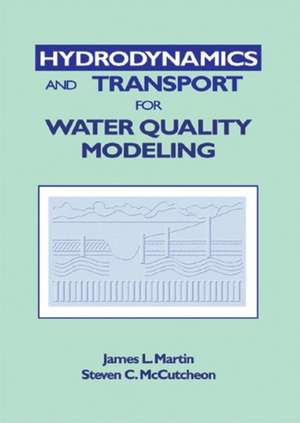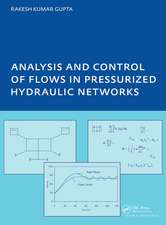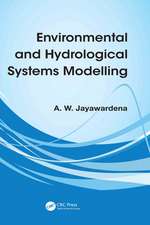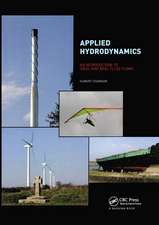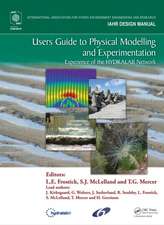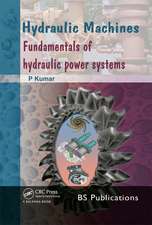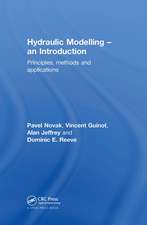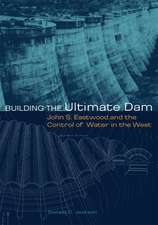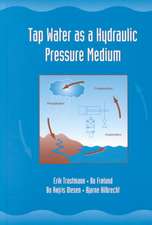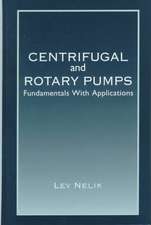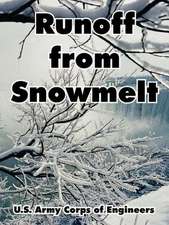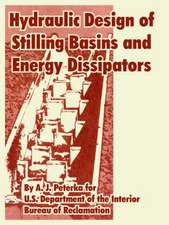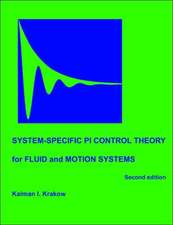Hydrodynamics and Transport for Water Quality Modeling
Autor James L. Martin, Steven C. McCutcheonen Limba Engleză Hardback – 15 dec 1998
The book begins with an overview of basic principles, and an introduction to the measurement and analysis of flow. The following section focuses on rivers and streams, including model complexity and data requirements, methods for estimating mixing, hydrologic routing methods, and unsteady flow modeling. The third section considers lakes and reservoirs, and discusses stratification and temperature modeling, mixing methods, reservoir routing and water balances, and dynamic modeling using one-, two-, and three-dimensional models. The book concludes with a section on estuaries, containing topics such as origins and classification, tides, mixing methods, tidally averaged estuary models, and dynamic modeling. Over 250 figures support the text.
This is a valuable guide for students and practicing modelers who do not have extensive backgrounds in fluid dynamics.
Preț: 1040.97 lei
Preț vechi: 1269.47 lei
-18% Nou
Puncte Express: 1561
Preț estimativ în valută:
199.18€ • 208.53$ • 164.82£
199.18€ • 208.53$ • 164.82£
Carte tipărită la comandă
Livrare economică 05-19 aprilie
Preluare comenzi: 021 569.72.76
Specificații
ISBN-13: 9780873716123
ISBN-10: 0873716124
Pagini: 816
Ilustrații: 75 tables and 898 equations
Dimensiuni: 178 x 254 x 49 mm
Greutate: 1.62 kg
Ediția:1
Editura: CRC Press
Colecția CRC Press
ISBN-10: 0873716124
Pagini: 816
Ilustrații: 75 tables and 898 equations
Dimensiuni: 178 x 254 x 49 mm
Greutate: 1.62 kg
Ediția:1
Editura: CRC Press
Colecția CRC Press
Public țintă
UndergraduateCuprins
SECTION I. FUNDAMENTALS Chapter 1. Fundamental Relationships for Flow and Transport Mechanistic versus Empirical Modeling General Principles Physical Properties of Water Instantaneous Equations for Fluid Flow and Transport Reynolds Time-Averaged Mean Flow and Transport Equations Model Complexity: Selection and Development Data Requirements Definitions Dimensionless Numbers Chapter 2. Measurement and Analysis of Flow Introduction Measurement of Velocity and Flow Measurement of Stage Computation of Discharge Tracer Studies Estimating Design Flows Appendices SECTION II. RIVERS AND STREAMS Chapter 3. Flow Models for Rivers and Streams Introduction Flow Model Complexity Data Requirements Estimating Mixing in Streams and Rivers Chapter 4. Non-Hydraulic Methods for Flow Estimation Flow Relationships Hydrologic Routing Methods Chapter 5. Hydraulic Methods for Steady Flows Steady, Uniform Flows Hydraulic Methods for Steady, Non-Uniform Flows Chapter 6. Hydraulic Methods for Unsteady Flows Introduction Solution Techniques Unsteady Flow Methods Kinematic-Wave Model Chapter 7. Solutions of Complete Unsteady Flow Models Explicit Solution of a Link-Node Model Implicit Solution Using the Four-Point Method SECTION III. LAKES AND RESERVOIRS Chapter 8. Stratification and Heat Transfer in Lakes and Reservoirs Introduction to Lakes and Reservoirs Origin and Characteristics of Lakes and Reservoirs Stratification in Lakes and Reservoirs Temperature Simulation Ice Formation and Cover Chapter 9. Mixing in Lakes and Reservoirs Introduction Inflow Mixing Processes Outflow Mixing Processes Mixing by Wind, Waves, Convective Cooling, and Coriolis Forces Reservoir Management and Mixing Processes Chapter 10. Water Balances and Multidimensional Models Introduction Water Balance for Lakes and Reservoirs Zero-Dimensional or Box Models of Lake and Reservoir Quality One-Dimensional, Longitudinal Models of Lakes and Reservoirs One-Dimensional, Vertical Models of Lakes and Reservoirs Two-Dimensional (Laterally Averaged) Models Two-Dimensional Depth Averaged Models Three-Dimensional Models SECTION IV. ESTUARIES Chapter 11. Introduction to Estuaries Introduction General Characteristics of Estuaries Classification Schemes Chapter 12. Factors Affecting Transport and Mixing in Estuaries Introduction Tides The Coriolis Force Fresh Water Inflow Meteorological Effects Bathymetry Model Complexity Chapter 13. Turbulent Mixing and Dispersion in Estuaries Eddy Viscosity and Diffusivity Dispersion in Estuaries Estimation of Mixing Terms Chapter 14. Tidally Averaged Estuarine Models Introduction Fraction of Freshwater Method Modified Tidal Prism Method Pritchard's Method Lung and O'Connor's Method Computing Tidal Transport from Measured or Predicted Velocities Chapter 15. Dynamic Modeling of Estuaries Introduction Factors Distinguishing Modeling Approaches One-Dimensional Models of Estuaries Two-Dimensional (Horizontal Plane) Models Two-Dimensional (Vertical Plane) Models Three-Dimensional Models Coupling Hydrodynamic and Water Quality Models Appendices
Notă biografică
Martin, James L.; McCutcheon, Steven C.
Descriere
Presenting state-of-the-art techniques, Hydrodynamics and Transport for Water Quality Modeling provides a complete overview of current methods used to describe or predict transport in aquatic systems, with special emphasis on water quality modeling. The book features detailed descriptions of each method, supported by sample applications and case studies drawn from the authors' years of experience in the field. Each chapter examines a variety of modeling approaches, from simple to complex. This unique text/reference offers a wealth of information previously unavailable from a single source.
